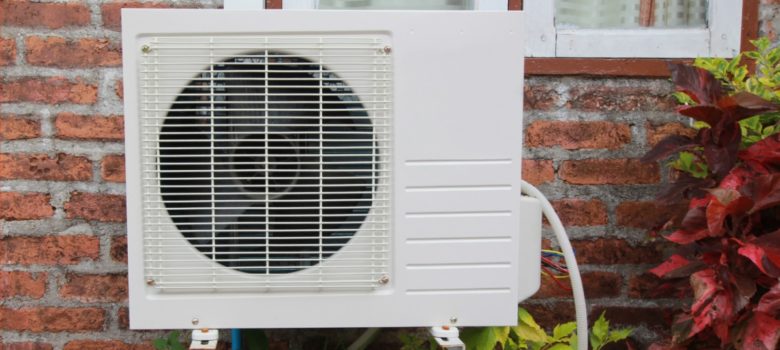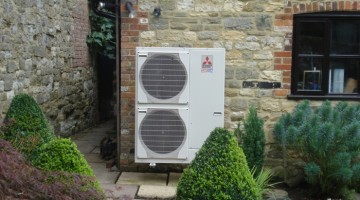
Air source heat pump technology rose in prominence in the 2010s in the UK, with the help of the Renewable Heat Incentive (RHI) – a subsidy paying for the low carbon heating generated to the improver, incentivising the take-up. Now in the 2020s the UK Government is looking to update the heating regulations to further accelerate the take-up of low carbon heating in exchange for the current gas boiler network.
Here we look at ten things to consider when deciding to purchase the air source heat pump for your home.
Installation cost consideration of Air Source Heat Pumps
Prior to installing what can ultimately be an expensive Air Source Heat Pump, ensure you have sufficiently insulated your house (see Solid or Cavity Wall Insulation, Loft Insulation, Floor Insulation), as otherwise the heat generated is not going to be efficiently used to heat your house. Insulation takes the heating demand down for your property, which allows ASHPs to be effective, given their low flow temperatures.
Buy certified MCS products and services
Only buy Air Source Heat Pumps certified under the Microgeneration Scheme or the MCS (make sure you check your supplier is signed up to the scheme), as this ensures the Air Source Heat Pump will be of suitable quality to fulfil your needs.
Offset cost of running Air Source Heat Pumps if possible
Air Source Heat Pumps require electricity to operate (unfortunately). But you can offset this to a degree by having Microgeneration technologies installed in your home, e.g. Solar Photovoltaic Cells, Micro Hydro Electric or Wind Turbines.
The Coefficient of Performance is a very important consideration
The Coefficient of Performance (CoP) is a measure of how efficient your heat pump is. For example if 1 unit of electrical energy is input into the Air Source Heat Pump, it should provide about 3.5 of useful heat energy (therefore it has a CoP of 3.5). The CoP varies between different Air Source Heat Pumps, so when buying a unit, remember the higher the CoP the better. The higher CoP Air Source Heat Pumps are usually more expensive (not always the case but check the manufacturer).
Air Source Heat Pumps perform poorly in low temperatures
Be aware that although Air Source Heat Pumps can still extract heat from the air in temperatures as low as -250c, the amount of heat they will provide at these temperatures will be much lower than if you live where there is an higher ambient temperature. So if you live somewhere that has a very cold ambient temperature, potentially look at other self generation energy solutions.
“Top-up” or secondary heating may need to be installed
The temperature of the water that an Air Source Heat Pump will produce is not as hot as a traditional boiler system, so you may need to consider secondary heating sources that act as a “top-up” heat form. Very popular is a log wood burning stove or an infrared heating panel.
Air Source Heat Pumps may irritate your neighbours
Air Source Heat Pumps produce noise, not a lot, but best to ensure it is not situated directly outside your bedroom or too close to the boundary of your next door neighbour. We filmed this short video clip on YouTube about Air Source Heat Pumps, therefore decide for yourself on the potential noise levels.
Always follow the latest planning guidelines prior to installation
In terms of planning permission, Air Source Heat Pumps are normally listed under permitted developments so no specific planning permission is actually required, however for this to be the case you do need to adhere to certain criteria of which the main one is related to neighbours and ensuring there is a suitable distance between your heat pump unit, and their house (please check with your installer / planning authority to make sure you adhere to building regulations).
Positioning of the system will drive its performance
You need to install your Air Source Heat Pump outside where there is a sufficient ambient air flow (we suggest doing so on ground level so it is easy to reach if it needs maintenance). Air Source Heat Pumps work by taking heat out of the air, so if you were to position it in an enclosed space, then it wouldn’t be effective.
Ensure you have a few quotes before you make a decision
As with all serious investments it is worth getting several quotes before investing in an Air Source Heat Pump. We also recommend speaking to other customers of your proposed installer, get their views and put your mind at rest when they tell you they have had a job installed to satisfactory standards.
If you are unsure about where to read up further about Air Source Heat Pumps because the whole thing sounds like a bit of a minefield, then we suggest going onto the MCS website and clicking on the section about manufacturers. It is worth speaking to a number of manufacturers so you get a feel for what the unique capabilities are of the systems you are looking to have installed in your property.











No Comments yet! Be the first one.